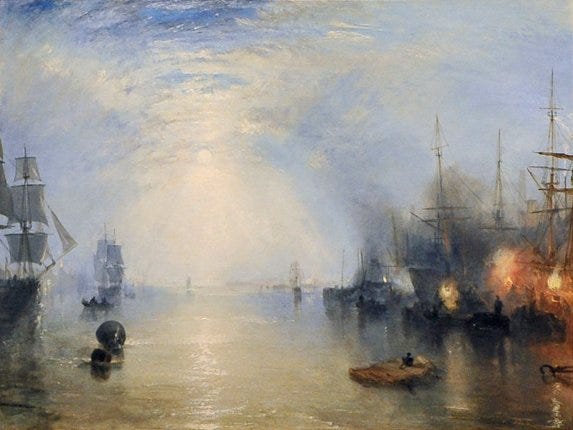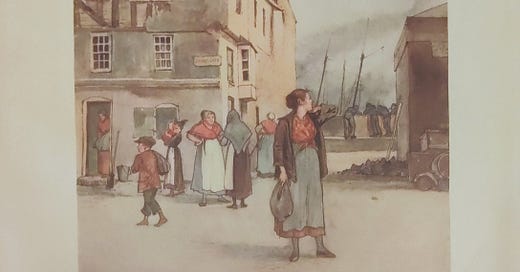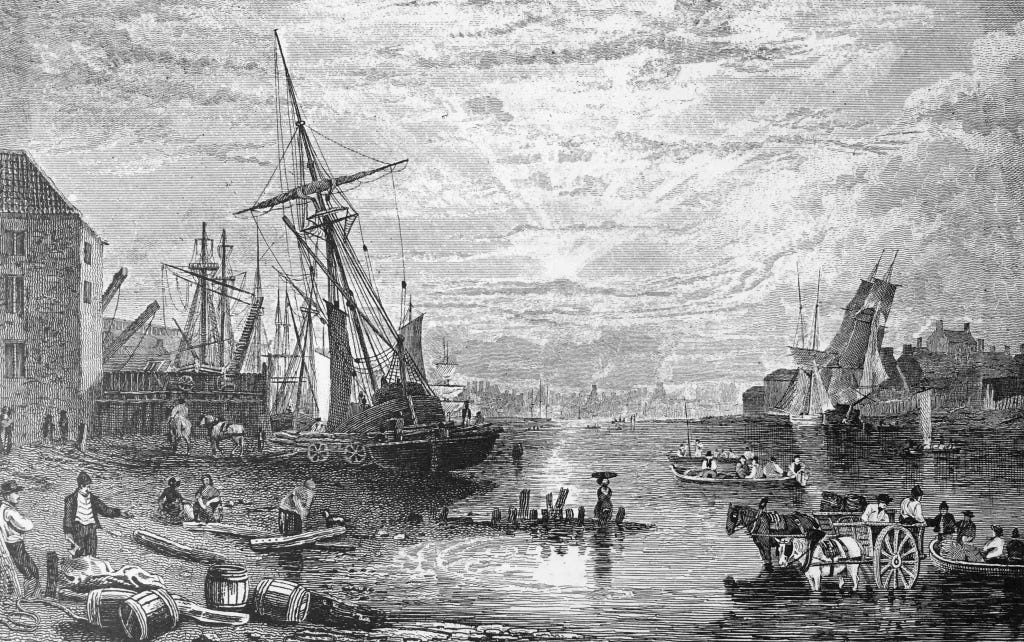The Keel Row (Roud 3059) is a traditional Tyneside song probably from some time in the early 18th century, possibly earlier still. This cheery shanty celebrates the uniquely skilled “keelmen” who performed the essential task of rowing the coal from the quay to the waiting ships moored in the River Tyne. These tough seafarers were reportedly a very insular group, and wore distinctive blue outfits that were made by tailors within their own community.
As I came thro' Sandgate,
Thro' Sandgate, thro' Sandgate,
As I came thro' Sandgate,
I heard a lassie sing:
"O, weel may the keel row,
The keel row, the keel row,
O weel may the keel row
That my laddie's in."
"He wears a blue bonnet,
Blue bonnet, blue bonnet,
He wears a blue bonnet
A dimple in his chin.
And weel may the keel row,
The keel row, the keel row,
And weel may the keel row
That my laddie's in."
In 1910 the song and tune were published a large format volume called “The Picture Song Book”, a collection of sheet music where each of the 44 songs is illustrated by a painting by aristocrat George James Howard, 9th Earl of Carlisle (1843 - 1911). He was an artist of some repute, and today appears in many public and private collections, including The Tate and the National Gallery of Art in Washington DC.
I think my favourite painting from the book is this one for The Keel Row, depicting a woman waiting for her Bonnie Laddie to return to the Sandgate shore:
As a bonus, here is a possibly less idealised image of the Sandgate shore. The image, depicting a number of boats and people working on what must have been a very muddy and inhospitable shoreline, was made as a copperplate engraving in around 1830 by J.W. Carmichael (1800 – 1868). This is an image from a book called Pictures of Tyneside.
Turner also painted the keelmen at work, in about the same period.

And finally, with added signing, here is a version of the song performed by Rachael McShane.
Please do sign up for more updates if you enjoy this sort of thing.






Keelrow : written and composed by Thomas Thompson and printed in 1827.